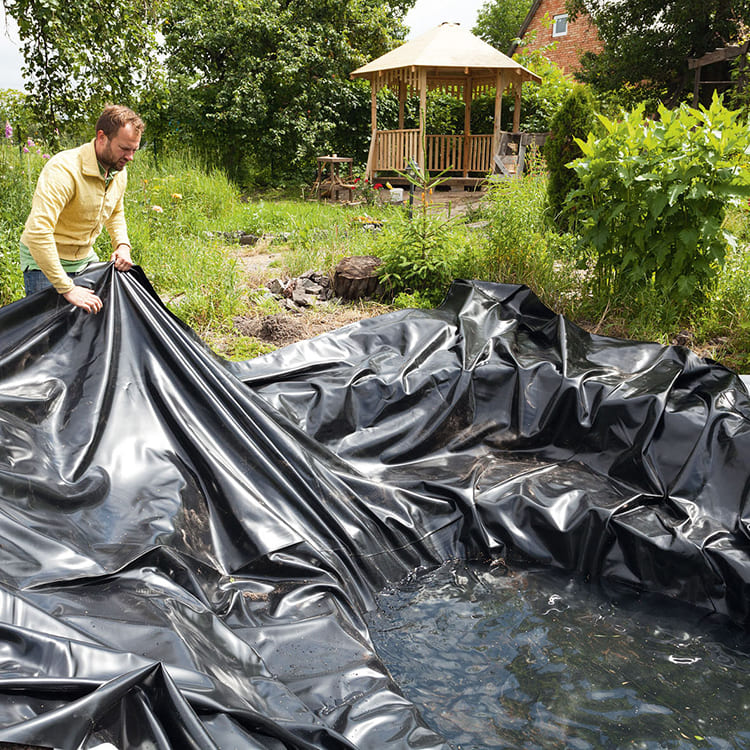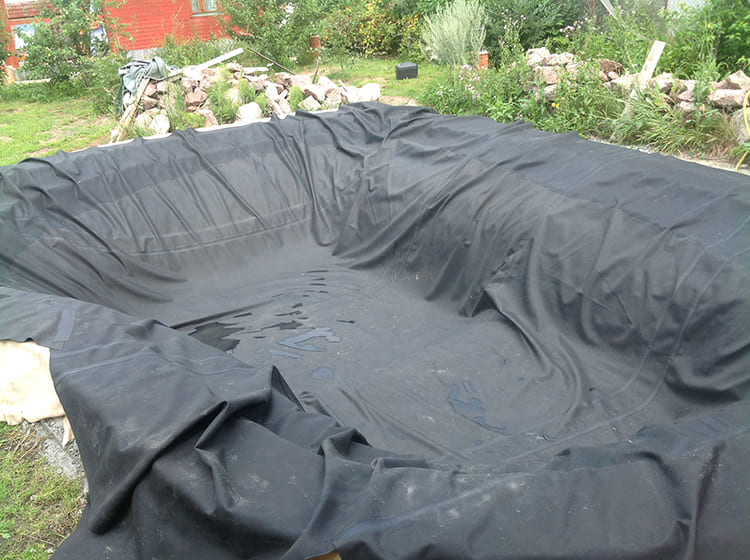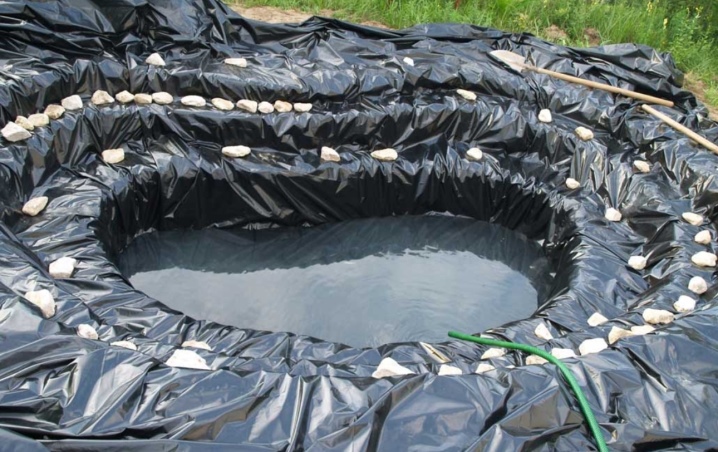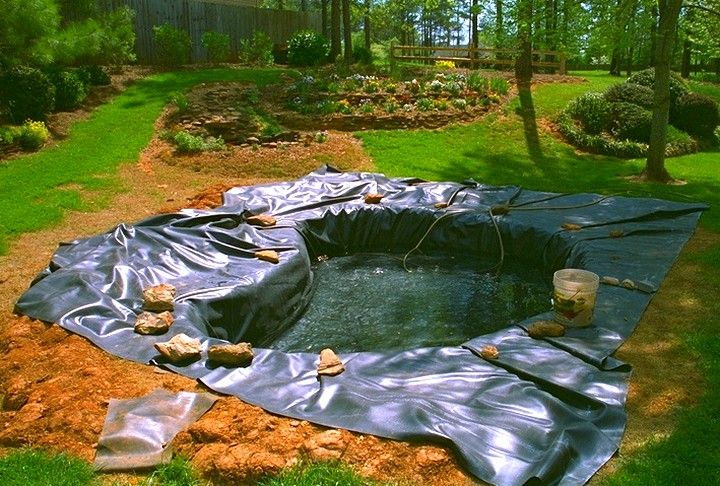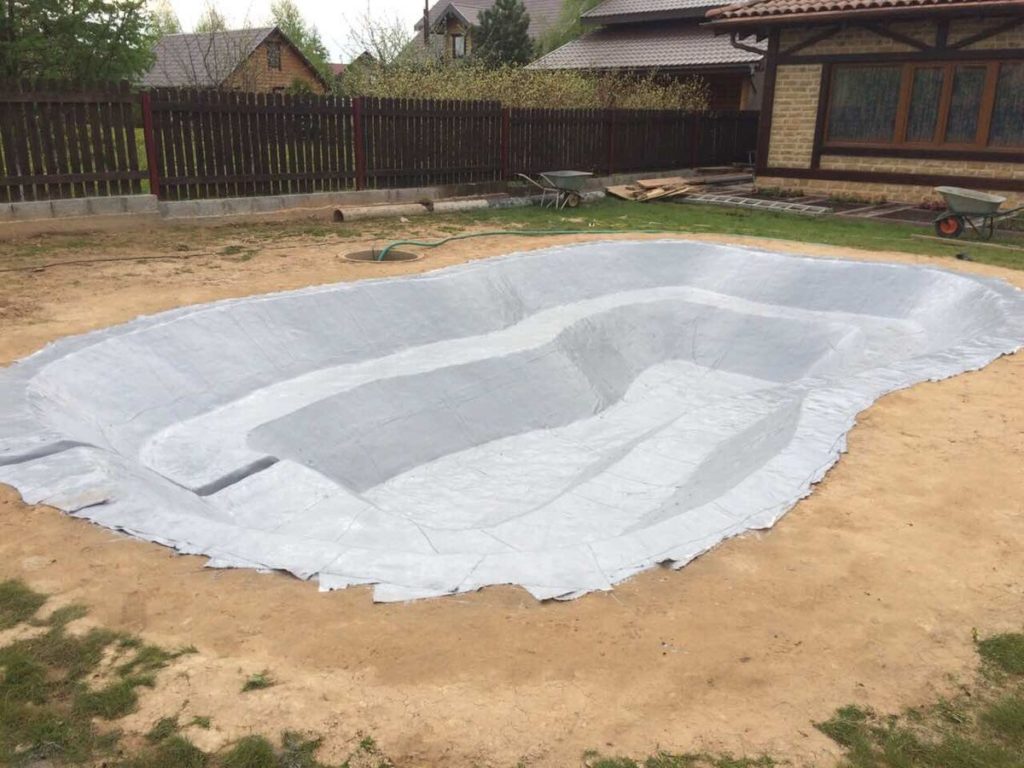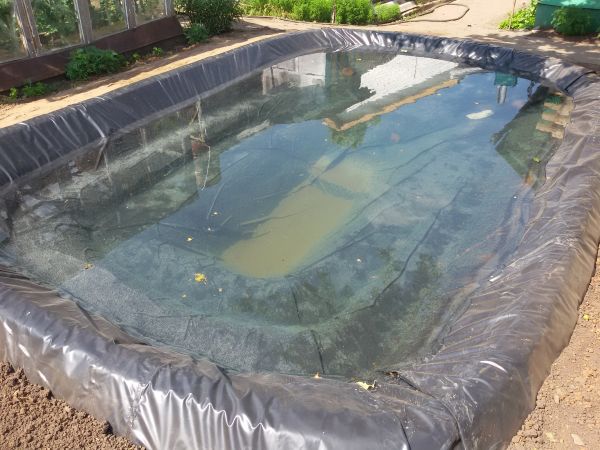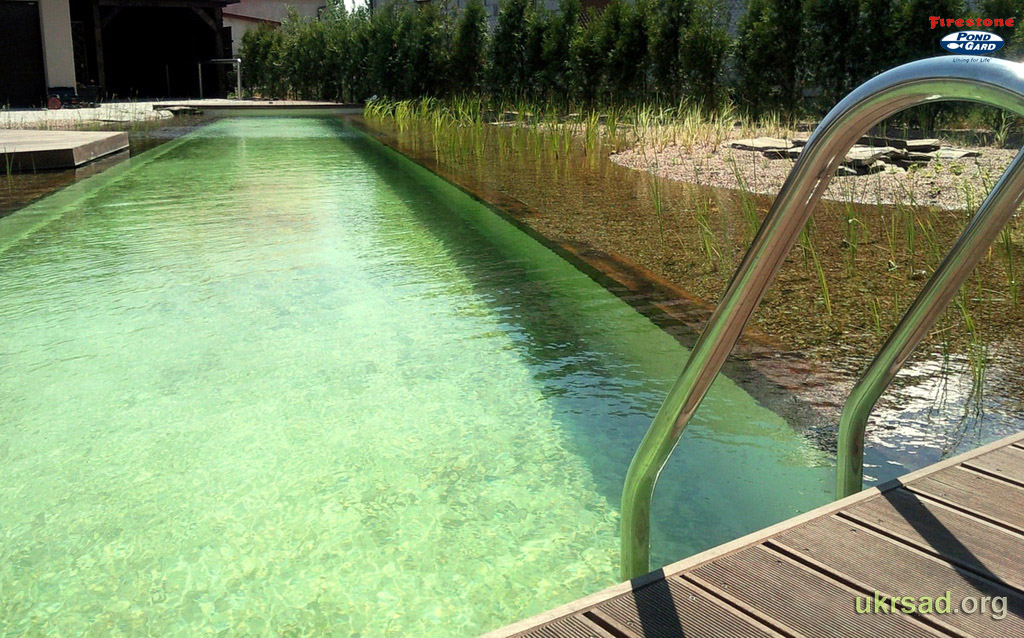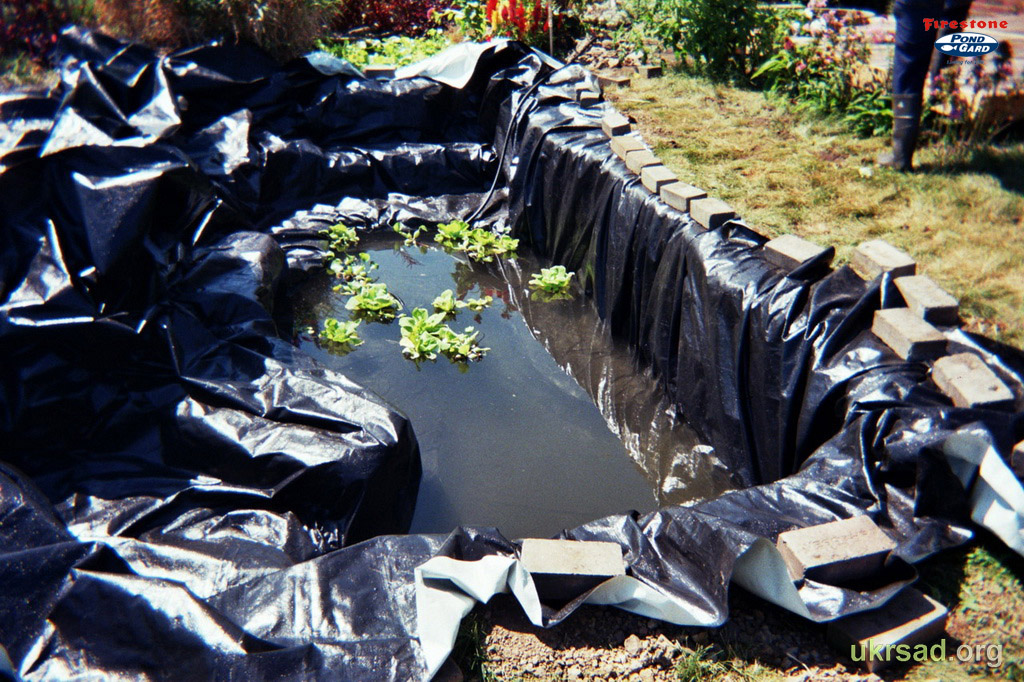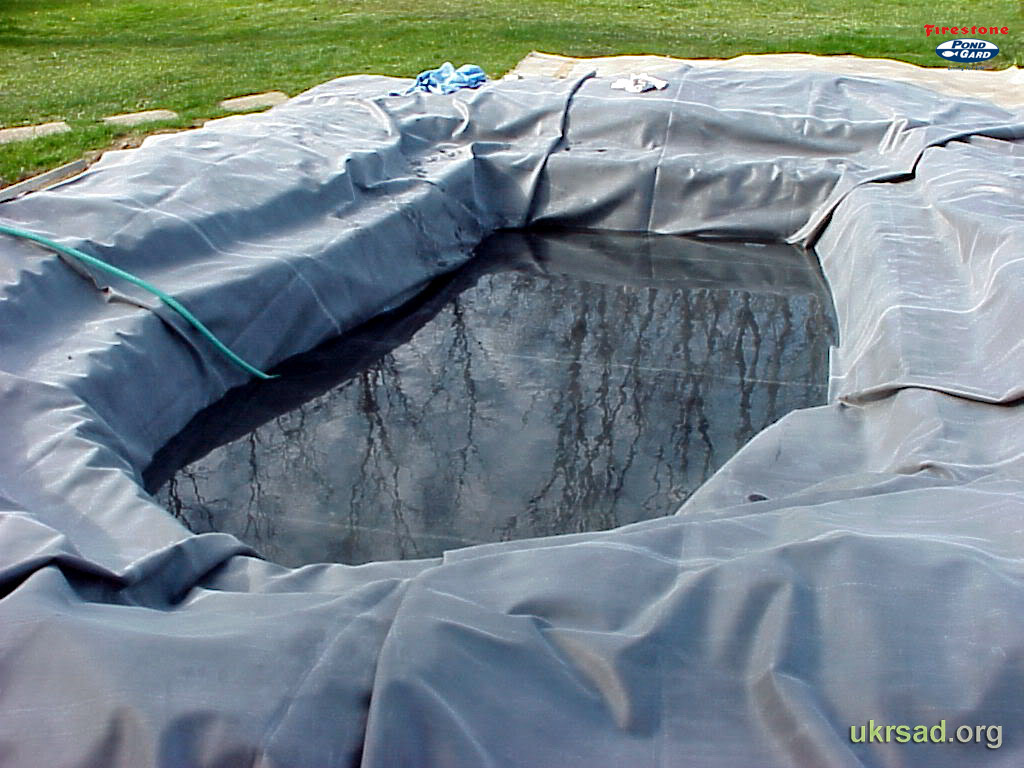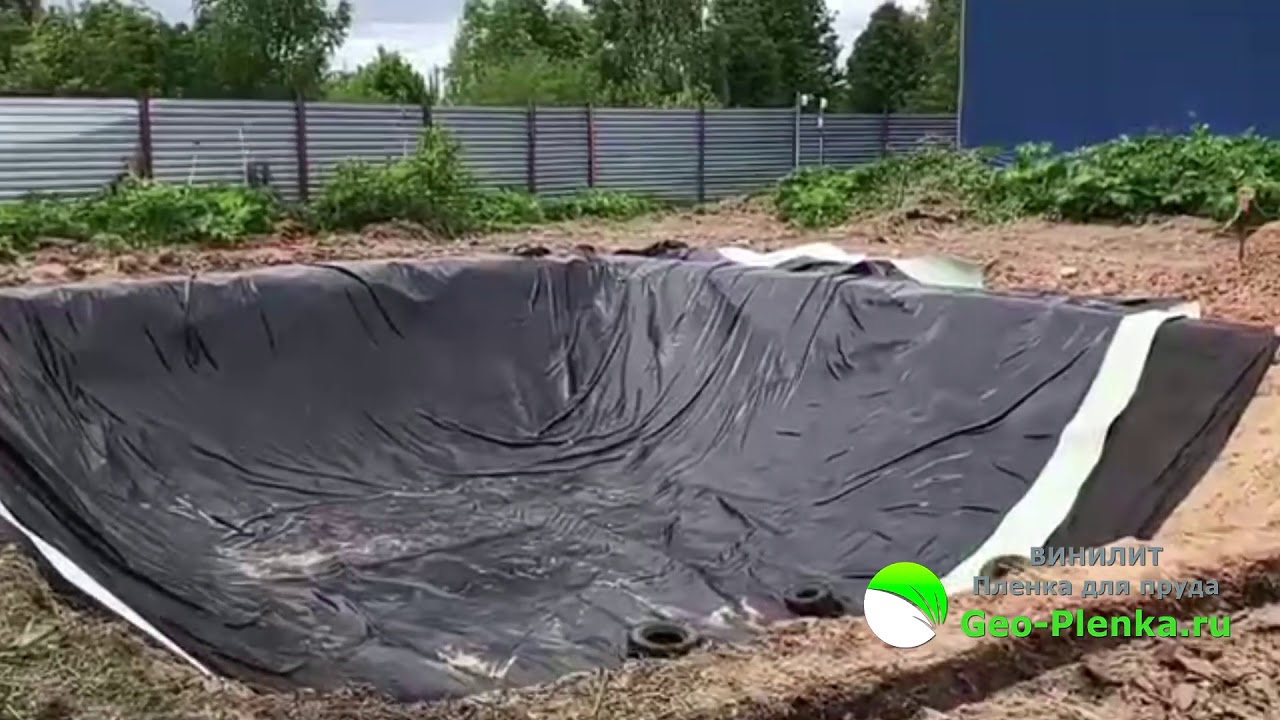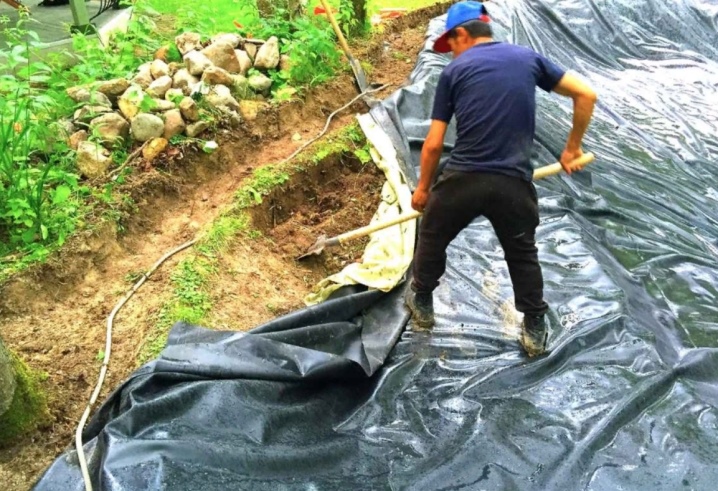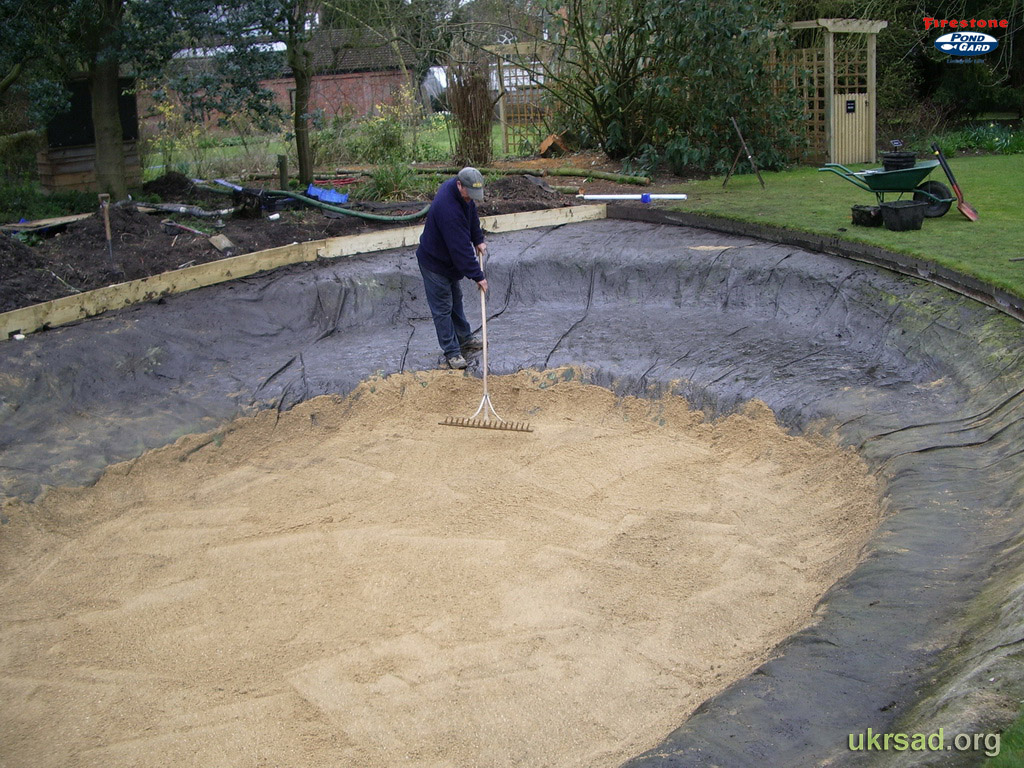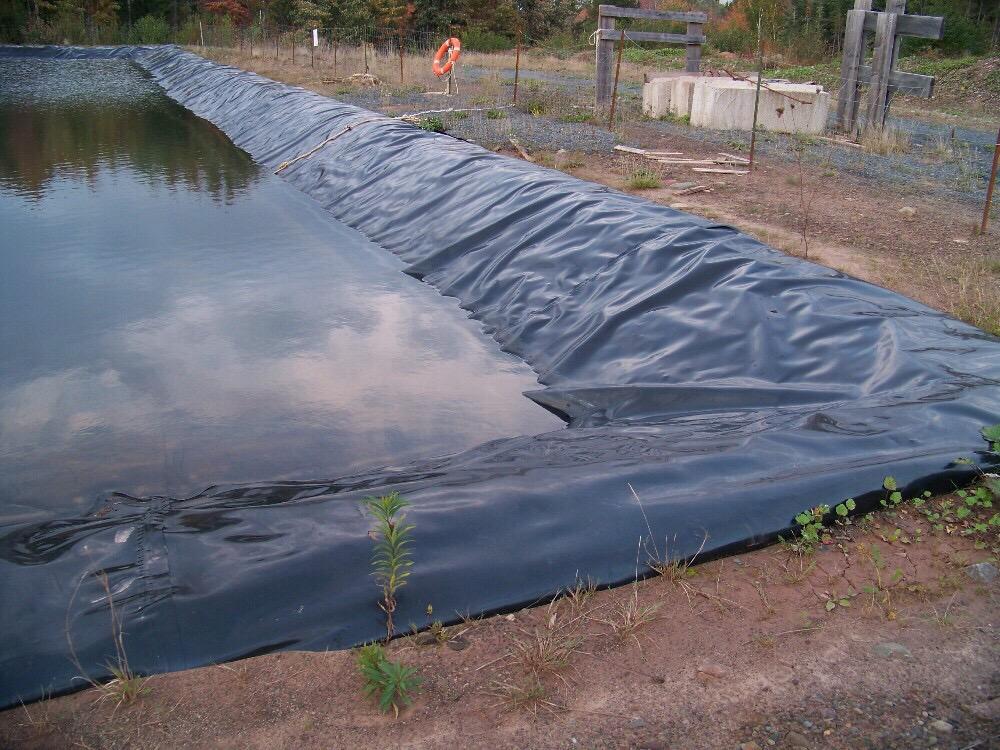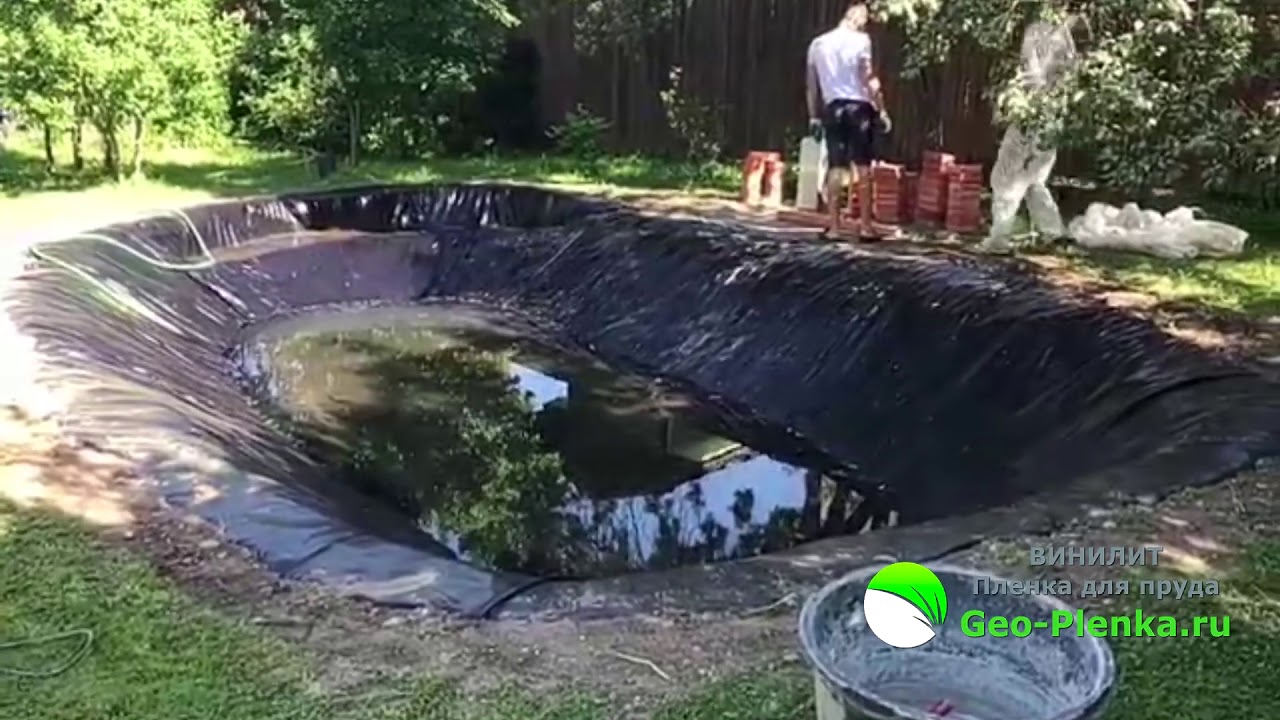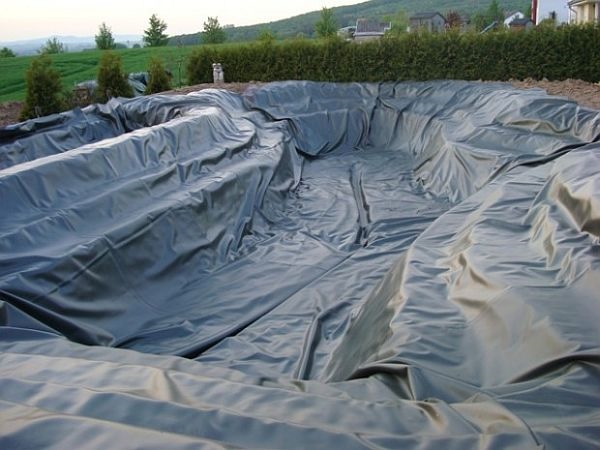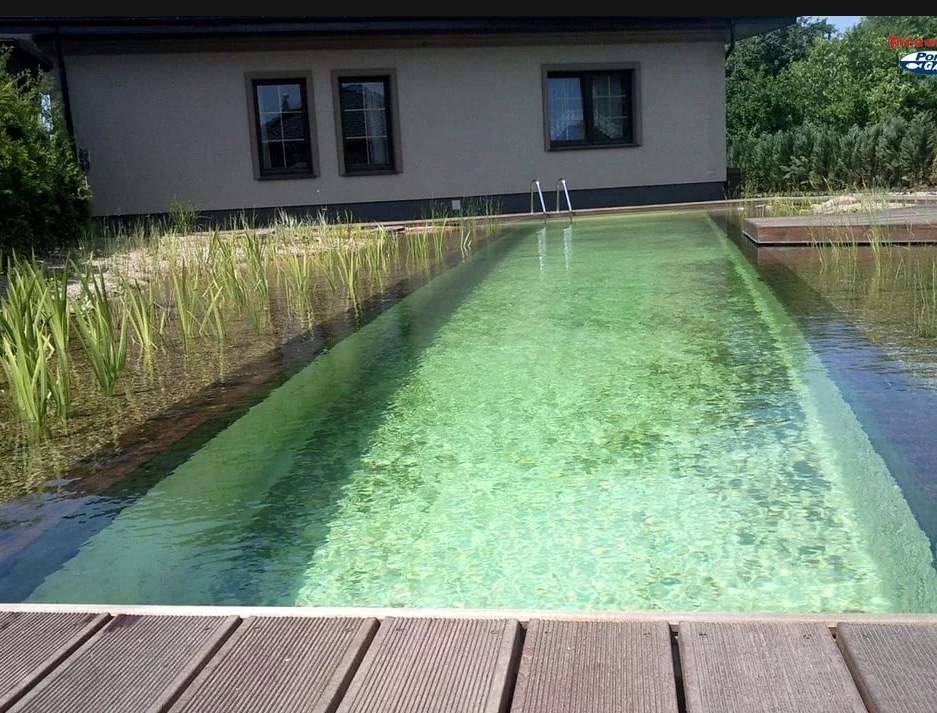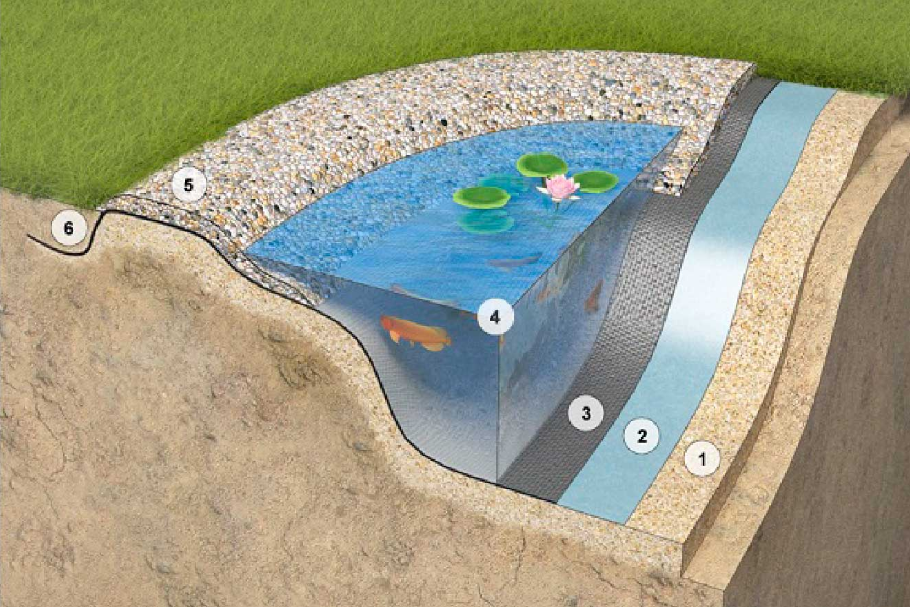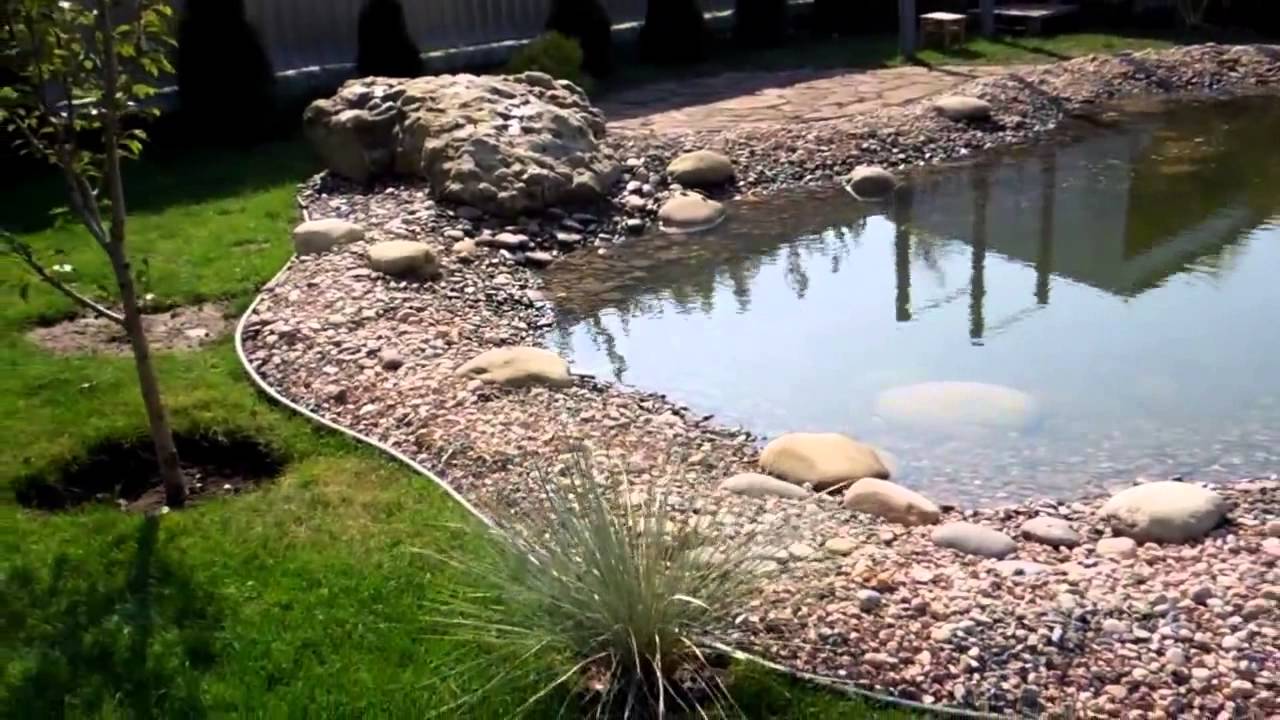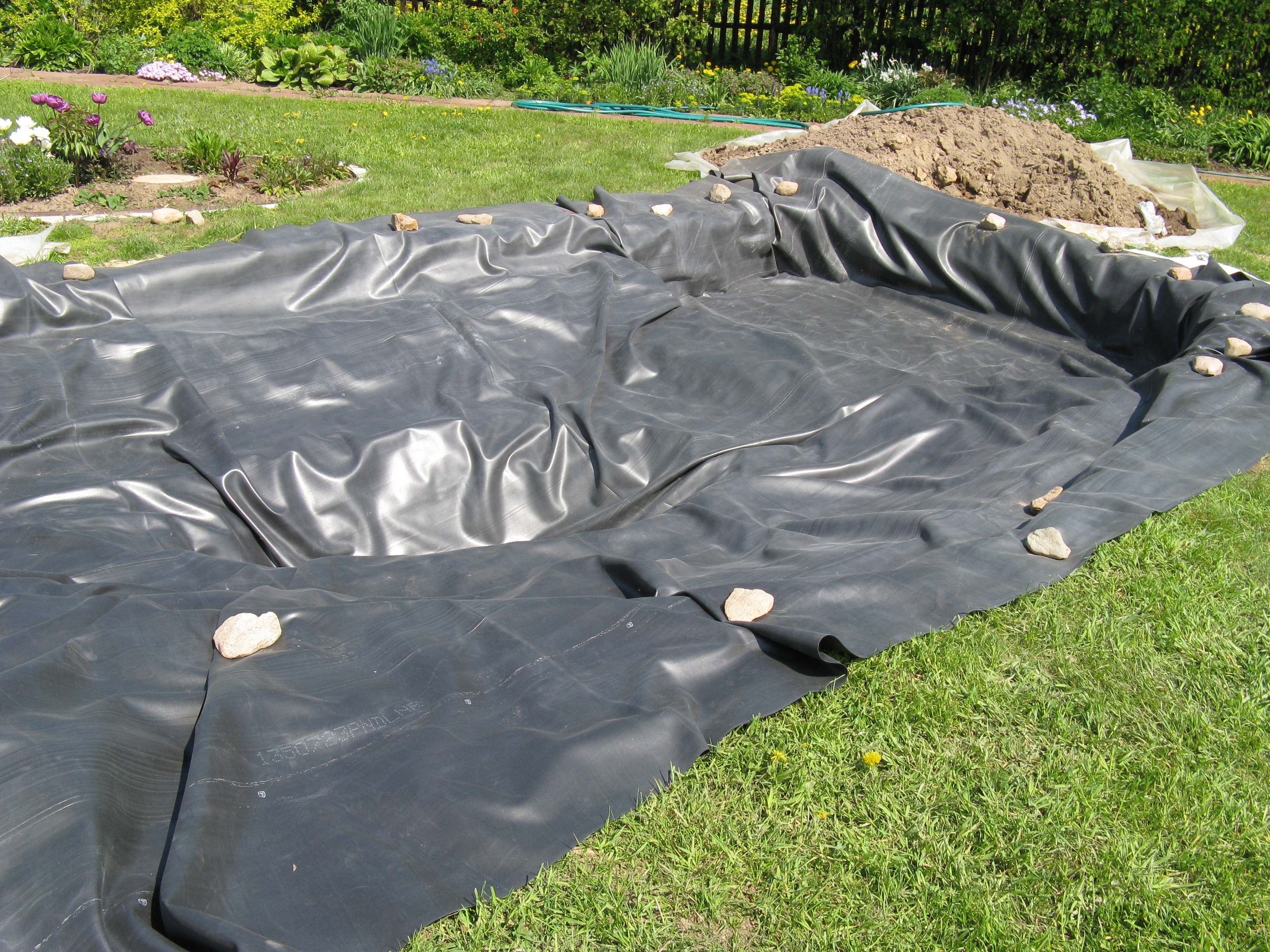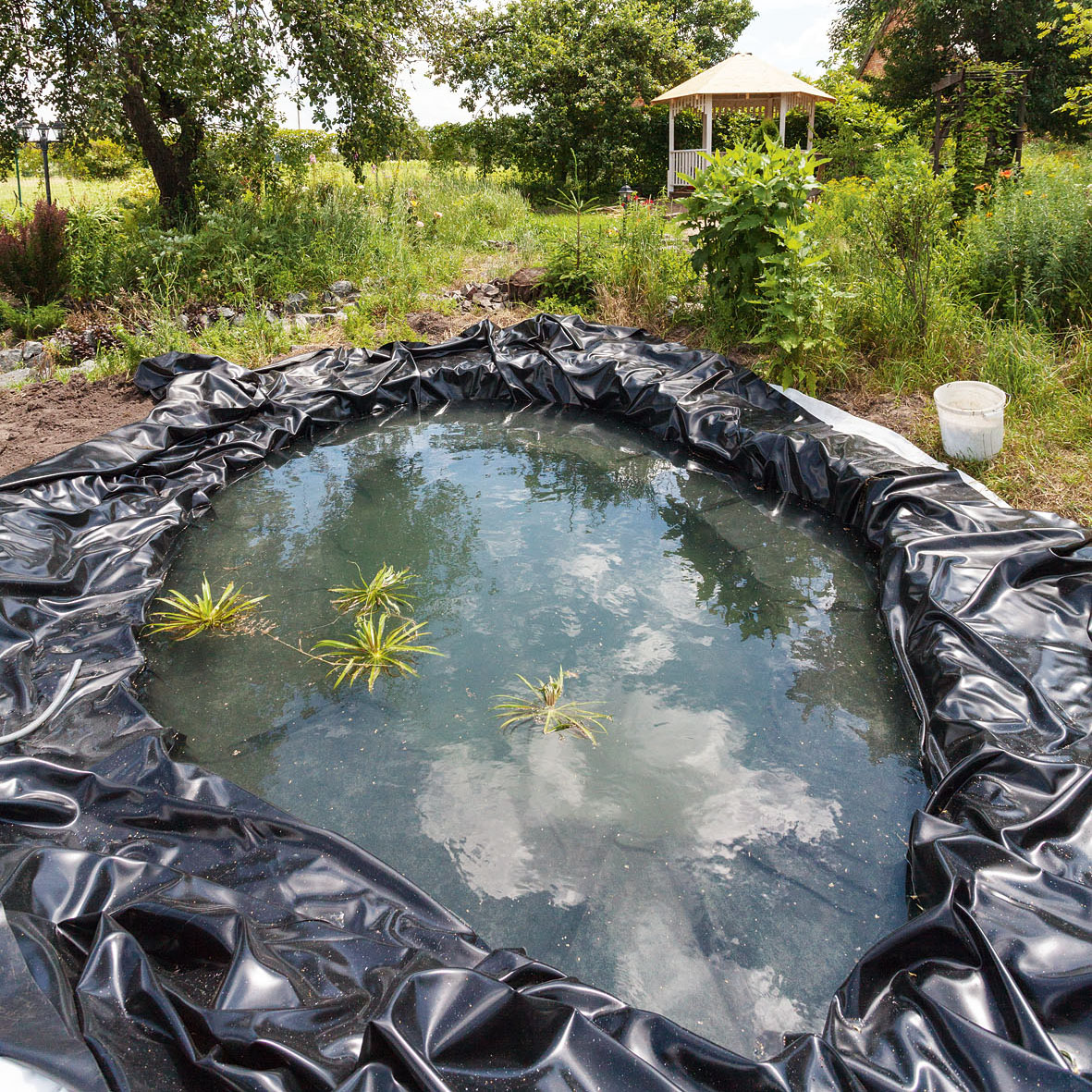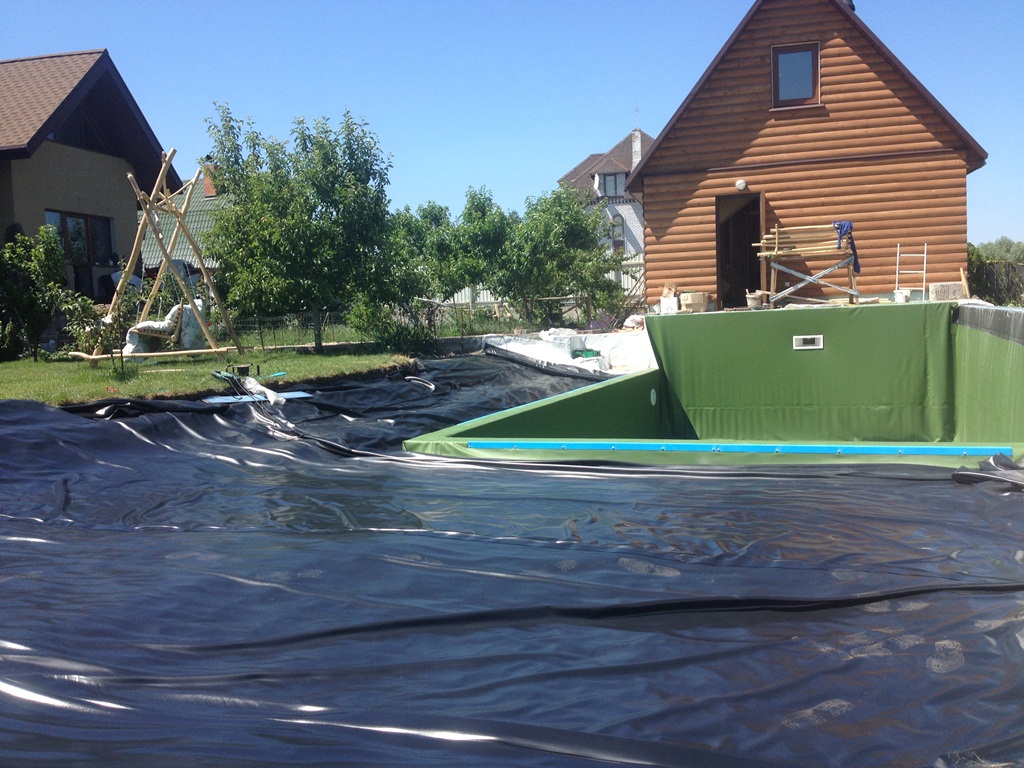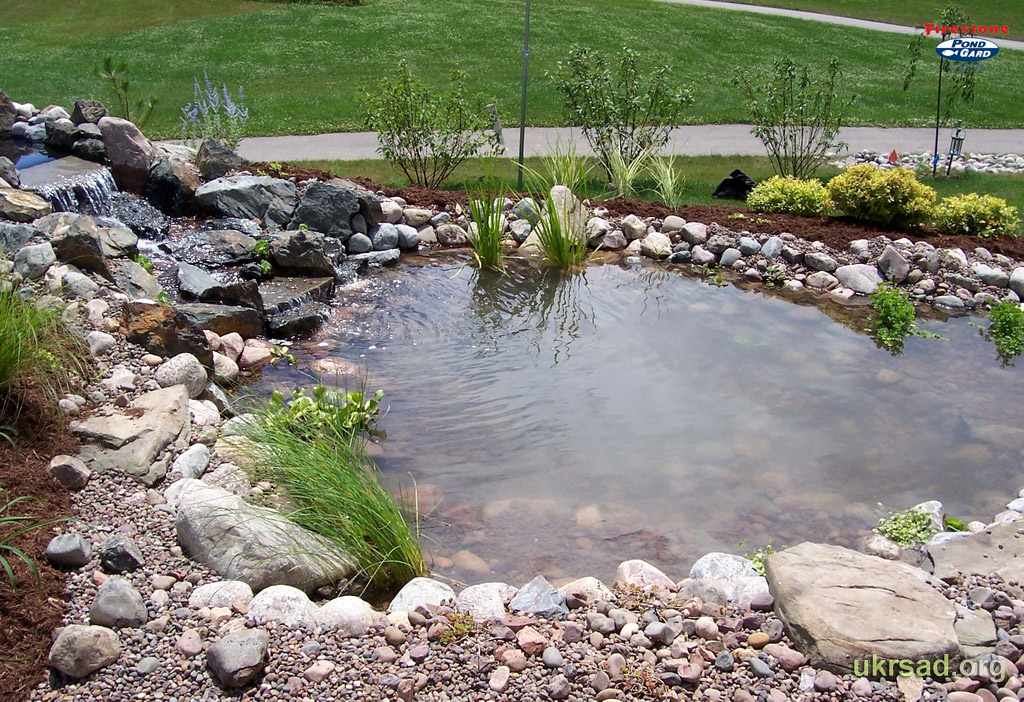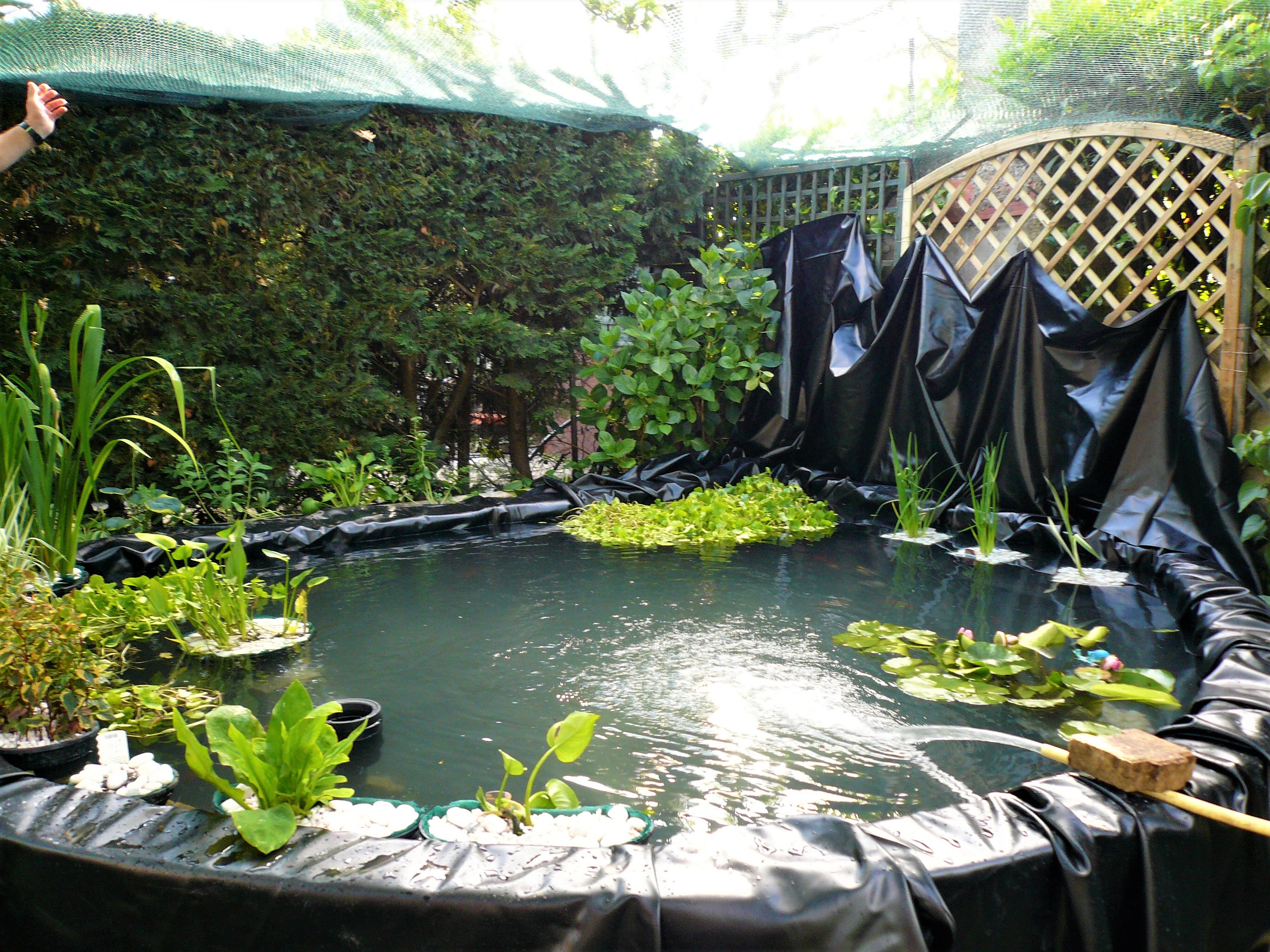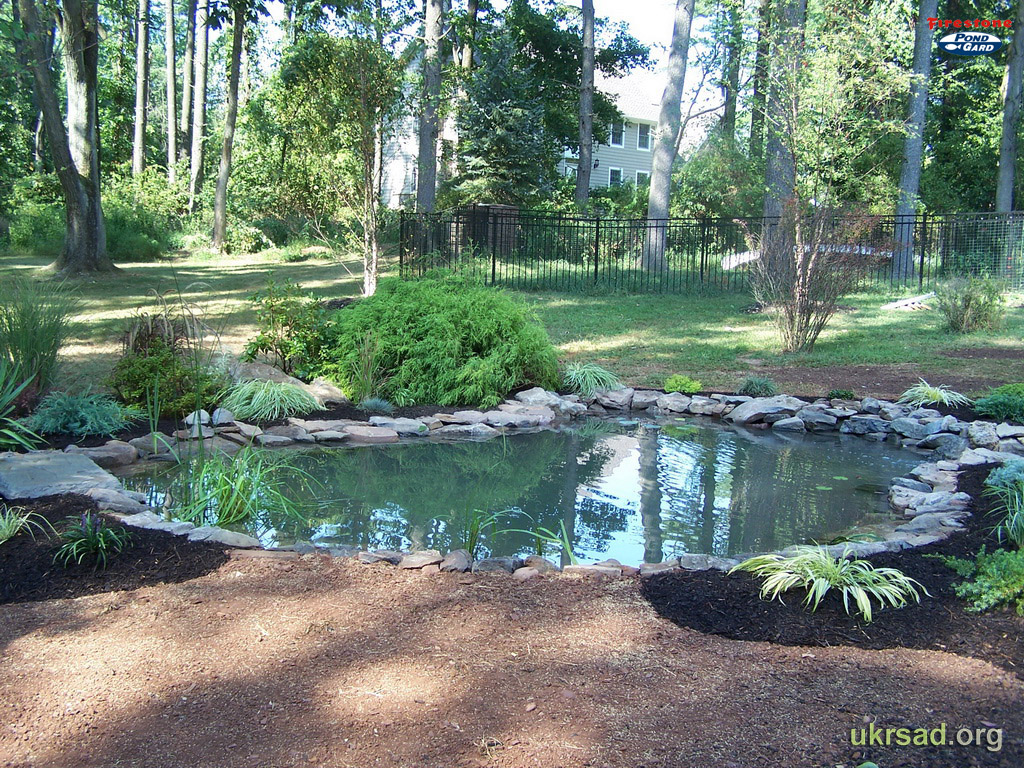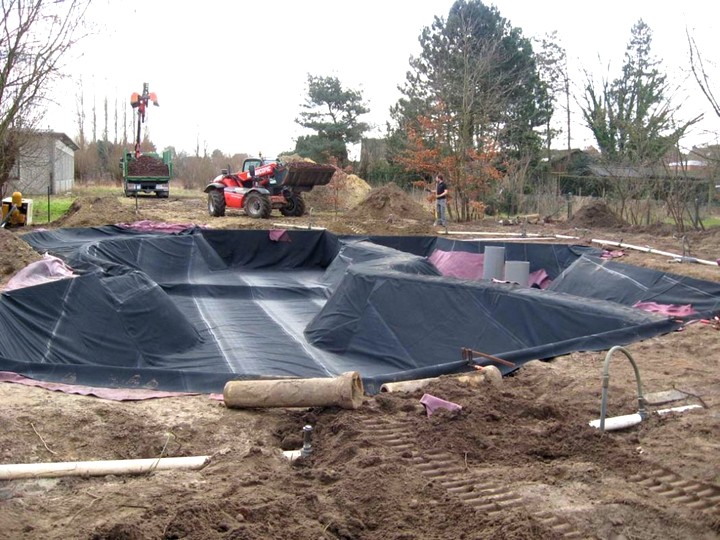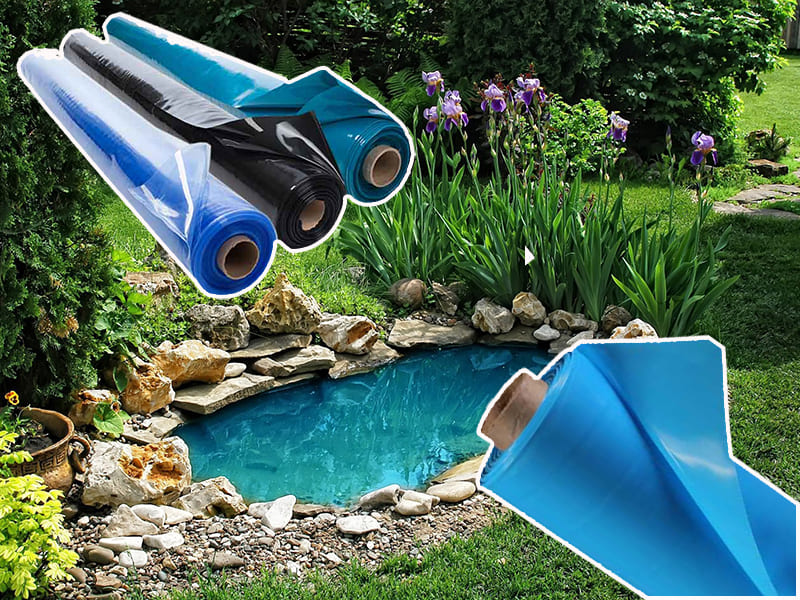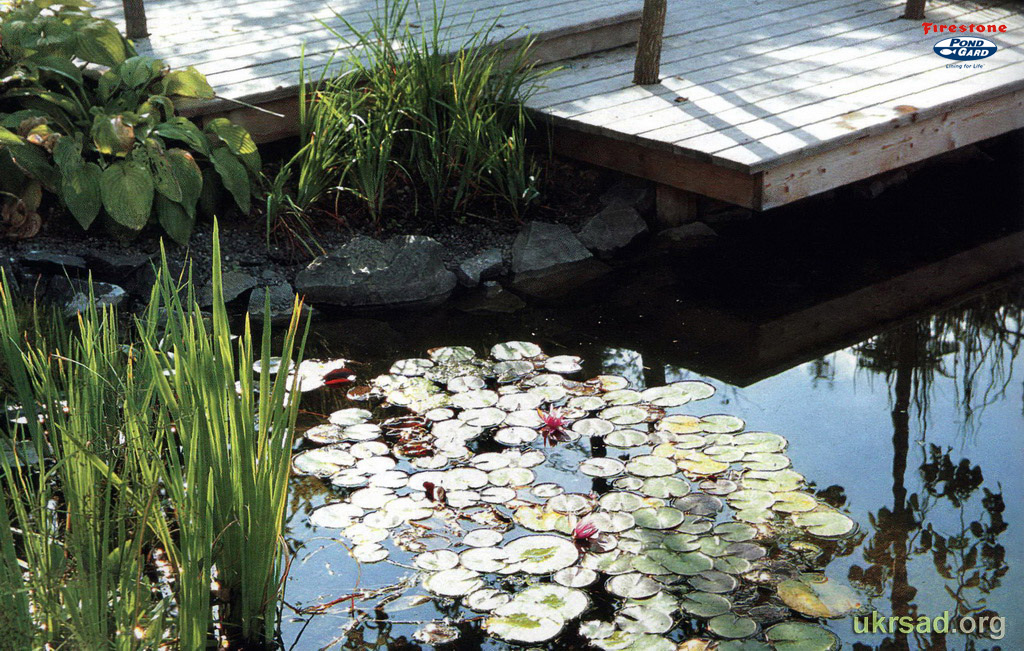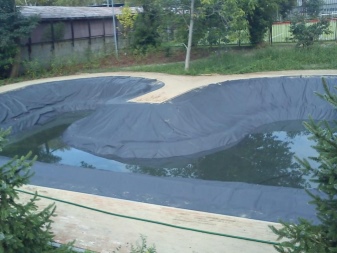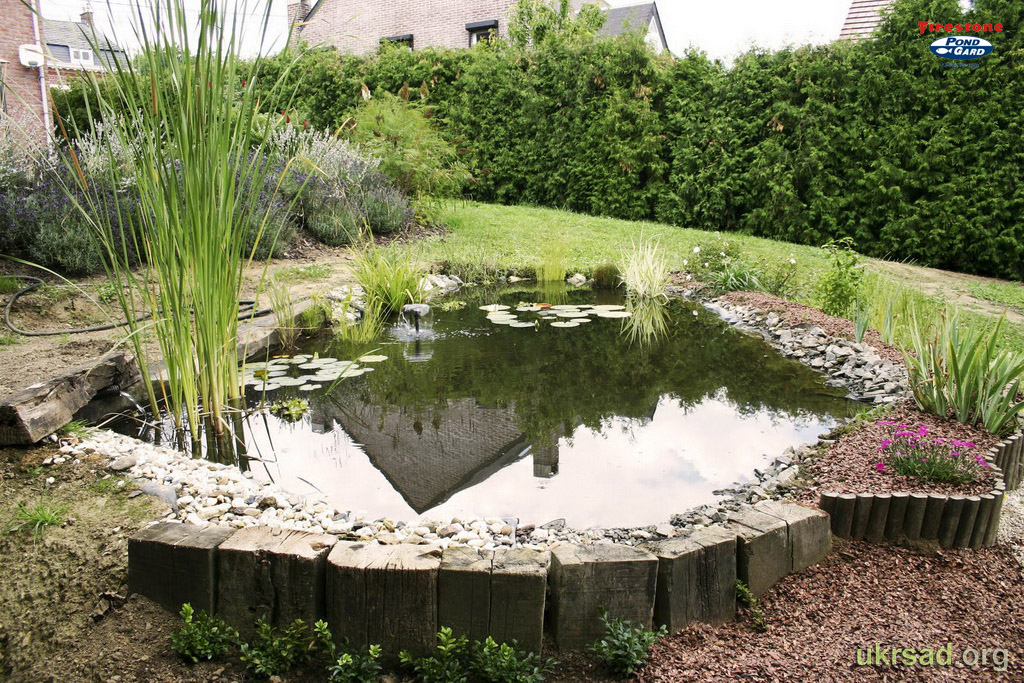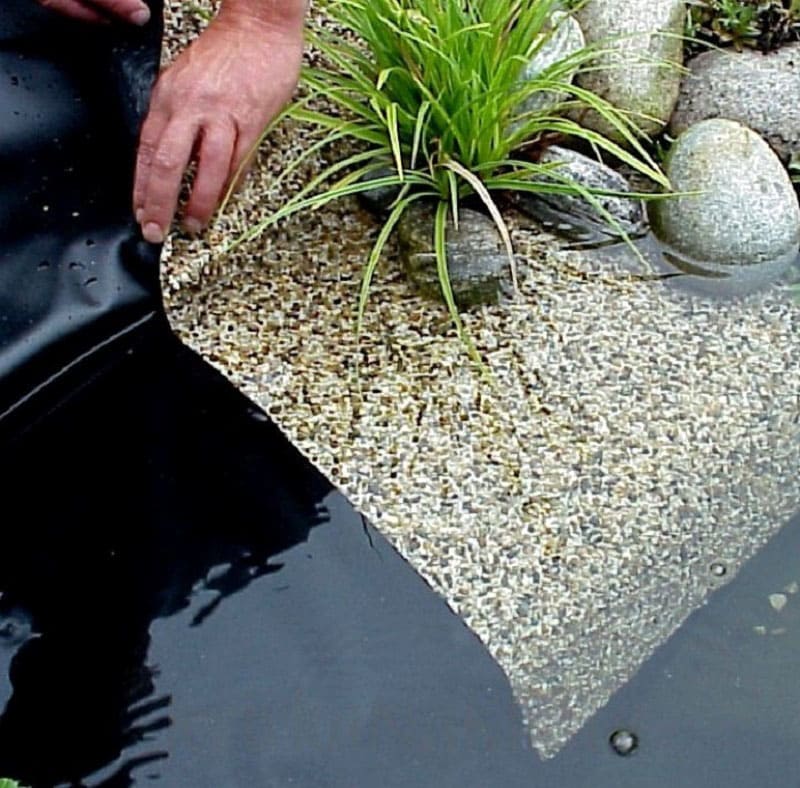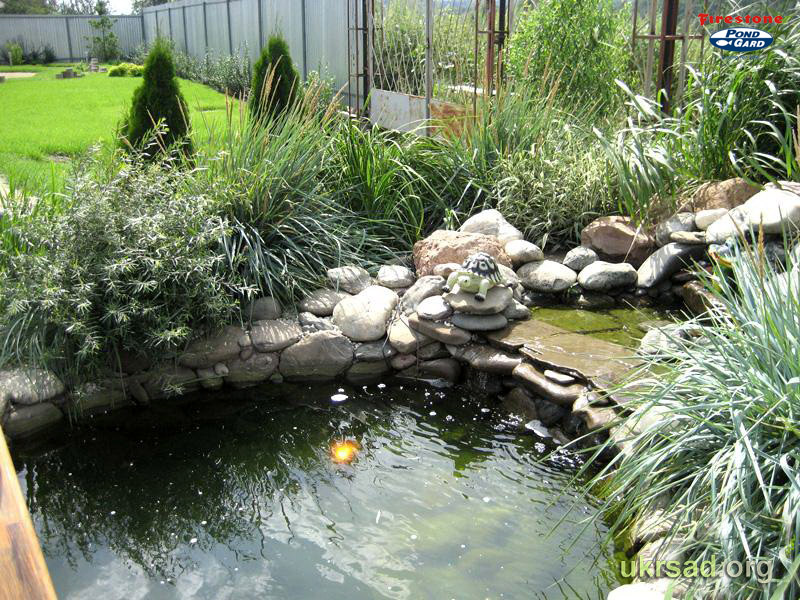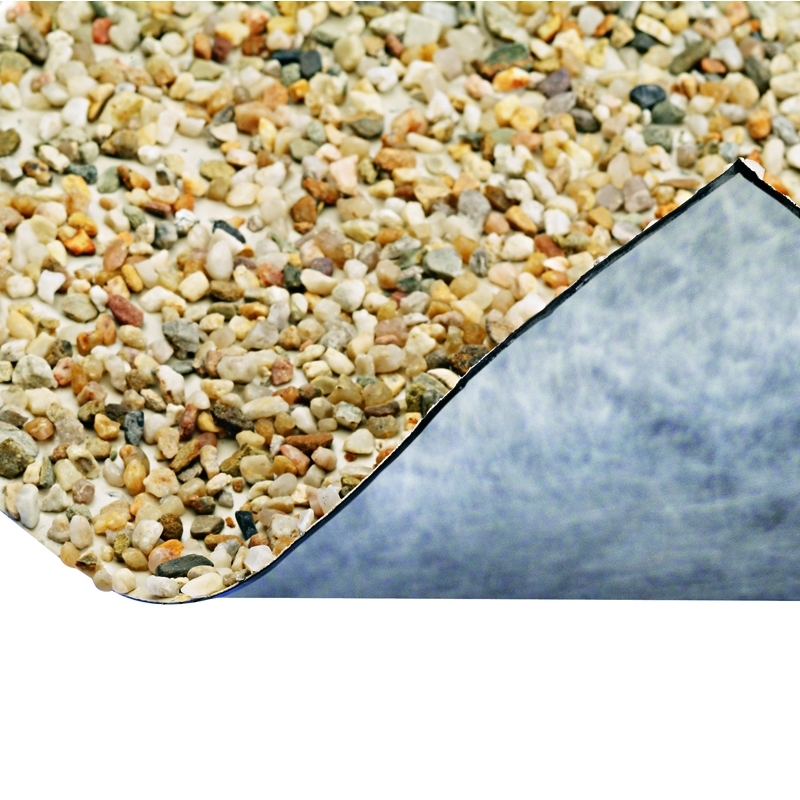Leading manufacturers
Today, many manufacturers are engaged in the manufacture of films for reservoirs. But not all offer decent quality materials. Elite coatings are produced by companies from Italy, Germany and the USA, while more budgetary ones are produced by Polish and Russian brands.
We offer you to get acquainted with the leading manufacturers in different price categories.
| Country | Manufacturer | Film type | Price in rub. for 1 m² on Yandex.Market as of June 2019 |
| Pvc | |||
| Italy | Agrilac | Thickness 0.5mm | 250 |
| Germany | Heissner | Thickness 1.0mm | 514 |
| AlfaFol Oase | Thickness 0.5mm | 239 | |
| Butyl rubber | |||
| USA | EPDM PondLiner | Thickness 1.2mm | 560 |
| RP | Ergis | Thickness 1.0mm | 413 |
| Germany | OASE | Thickness 0.5mm | 239 |
| Polyethylene | |||
| Russia | Anikom | 500 microns | 158 |
Which company is better to choose a film for a pond
When choosing a manufacturer, it is worth giving preference to proven firms that have been on the market for a long time, have many positive reviews and conduct an adequate pricing policy. Just such companies can be attributed to firms whose products are considered in this rating. Some enterprises are represented here by two products at once.
The five leaders in the market for manufacturers of waterproofing films for the construction of artificial reservoirs are the following companies:
- Polinet - the company produces high-quality films for household and construction needs. It is characterized by high strength, resistance to UV rays and low temperatures, and a good degree of elongation. On average, its service life is 20 years, which is easily explained by the wear resistance of the products. The manufacturer's waterproofing membranes are sold in convenient rolls and can be cut, depending on the required quantity.
- Anikom - the company produces geomembrane types HDPE (HDPE) and LDPE (LDPE) to create good insulation in artificial ponds. It is widely used in reservoirs for both fish farming and swimming. The company's products have excellent tear resistance, perfectly retain their appearance over time and are easy to install.
- Firestone Building Products is a manufacturer of waterproofing materials, including equipment for artificial reservoirs of small, medium and large sizes. Its membranes were noted on the market as flexible, durable, easy to install, environmentally friendly and aesthetic. Here we are talking about butyl rubber products, which serve an average of 15 years, and the warranty for them is provided for up to 10 years. In this rating, the company is represented by EPDM Pond Liner Carlisle and Pondgard films.
- Oase is a German supplier of premium equipment for fountains, pools and ponds. Its films come in a variety of thicknesses and sizes. The manufacturer guarantees the possibility of re-using materials and the safe disposal of products that are no longer needed. The canvases of the company are recognized as waterproof and wear-resistant, withstand exposure to low and high temperatures, and retain their aesthetic appearance for a long time. Waterproofing material Steinfolie granit-grau and AlfaFol are included in the rating from the brand.
- Ergis - the company offers to buy butyl rubber film and other types for the pond. Their key differences are high strength, resistance to mechanical damage, chemical reagents and impurities in the composition of water, resistance to heavy loads and temperature extremes. The products of the company withstand well the effects of both heat and sun. The elasticity of the brand's materials allows you to create ponds of various, even the most complex shapes. They do not contain dangerous toxins that could kill fish in the pond. Due to their environmental friendliness, Ergis products are also safe for people and the environment.
Each of the companies in the list above promises a long service life of their products (from 10 years) and always provides a guarantee of at least 2-3 years.
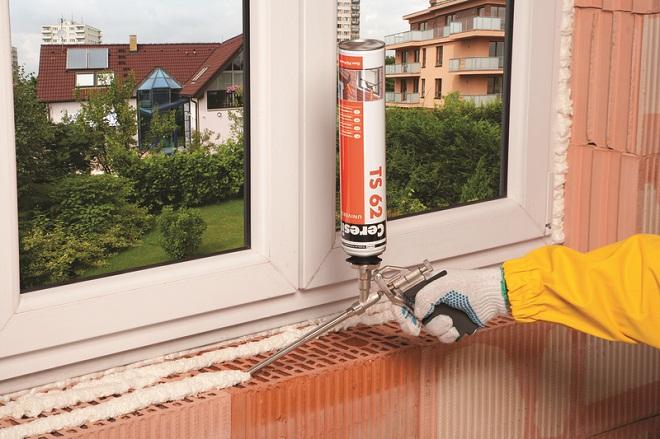
The best polyurethane foams
The best plastic films for a pond
Such material is beneficial in that it has a high coefficient of elongation - up to 300%, which makes it possible to create reservoirs of very decent sizes and considerable depth. On average, it can withstand a pressure of 2 kPa, its thickness is about 0.5 to 1.2 mm, and its length varies between 25-50 m construction of artificial ponds.
Polinet 200 microns technical specifications
This is a technical polyethylene film intended for vapor barrier, but it is also successfully used to create artificial reservoirs in the garden as one of the layers. It is sold in a roll with a length of 100 m, which makes it possible to make a fairly large body of water, but its width in this case is limited to 3 m. The material is quite dense, does not tear and withstands exposure to large amounts of water. The product reliably holds it in the pit due to its high strength and does not pose a danger to fish and plants due to its environmental friendliness.
Polinet film 200 microns perfectly retains its elasticity and original appearance for many years, in particular, due to its thickness of 200 microns, and therefore can be reused. Its use reduces the likelihood of water decay and bloom, and prevents the appearance of an unpleasant odor. It also creates an effective barrier against harmful microorganisms and greatly facilitates pond maintenance.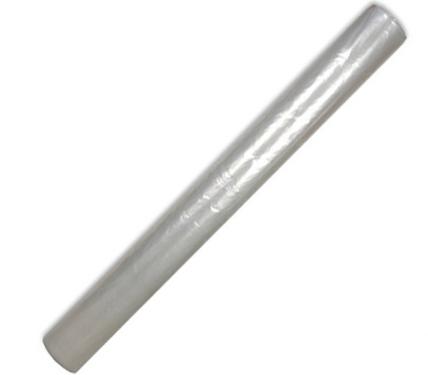
Dignity
- Practically invisible at the bottom;
- Wide range of applications;
- Good density;
- Excellent resistance to mechanical stress;
- Not very slippery.
disadvantages
Not found.
Anikom black 1000 microns, 8x10 m
The film "Anikom" is made on the basis of the highest grade polyethylene with the addition of components that increase its service life. It does not contain hazardous components that harm the environment, fish and plants in the reservoir. It perfectly tolerates both cold and UV rays, and can be used at temperatures from -60 to + 60 ° C. The material is superelastic, has a good margin of safety and is resistant to mechanical damage, perfectly resists wear. Thanks to this, the product retains its aesthetic appearance for a long time.
Dignity
- Shelf life - about 70 years;
- Suitable for both hydro and vapor barrier;
- Good density - 1000 g / m2;
- Creates a reliable insulating layer;
- Large dimensions - 10x9 m;
- Excellent thickness - 1000 microns.
disadvantages
Weighs 70 kg.
Material manufacturers and price overview
The most common manufacturers of pond films:
- The Italian company Agrilac is engaged in the production of PVC roll material with waterproofing properties. These products are among the highest quality and most widely available. The cost varies from 150 rubles per square meter.
- Polish organization IZOFOL, producing waterproofing materials. An important aspect in the production of such a film is its quality, therefore it is considered one of the most popular. Price from 250 rubles per square meter.
- WTB ELBEsecur is the most widespread among German companies producing waterproofing sheets for reservoirs. A limited choice of PVC material is offered to buyers, but this does not affect the production of a very durable product. German film is reliable even under heavy loads. The cost of such material starts at 250 rubles per square meter.
- Gardena is one of the largest European groups of companies engaged in the production of various components for the garden and vegetable garden. The administrative complex is located in Germany. The cost for the material is 170-210 rubles per square meter. They produce very high quality products.
- Another German manufacturer is Heissner. They are engaged in the production of chemical materials, as well as PVC products.It is recommended to dwell on the products of these manufacturers only if there are no other options.
- Models of the elite group use various stones of natural origin in their decoration. Regardless of manufacturers, the cost of the material starts from 750 rubles. per square meter.
Advantages of films for artificial reservoirs
Pond maintenance is not a simple technical process. A good insulating cover can help avoid a lot of hassle. What is it - a quality coating for swimming pools, ponds, reservoirs and artificial lakes?
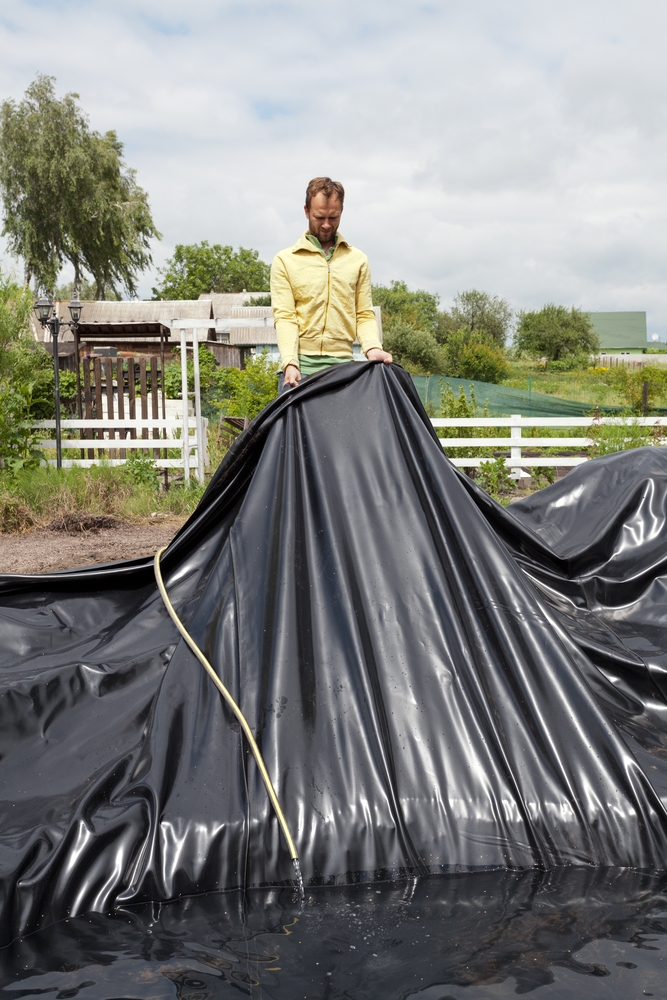
Laying the film
Modern manufacturers of insulation materials have invented a reliable waterproofing agent, which has a lot of advantages:
- An environmentally friendly product, which means that it will not harm either the environment or people;
- Affordable price;
- Large selection of colors and patterns;
- Significant resistance to mechanical and chemical damage;
- High quality material can last up to 50 years;
- Easy and convenient use when decorating an artificial pond.
Agree that these listed advantages are enough to draw attention to such a material as a film insulator. Among the owners of suburban areas and landscape designers, the film for the pond is widely known.
This material is not at all difficult to work with.
Naturalness comes first
Any body of water begins with a foundation pit. Then a purchased polymer one-piece bowl is installed or a concrete one is poured. The polymer bowl has its pros and cons. Among the minuses, first of all, we will name the tendency to damage and the stamped form. Therefore, if you have the physical and material opportunity, give preference to a concrete pond. This is a more durable material, and a concrete bowl gives more opportunities for further decorative transformation of the reservoir.

Film coating with concrete pouring of the pond
So that concrete does not crumble over time from exposure to moisture, it is faced with tiles, glass mosaics or even marble. But, if we are talking about an artificial pond, then he will only lose from this. Ponds in the garden are erected in order to get closer to nature, and not to emphasize the handmade design.
Therefore, a relatively new method of film waterproofing helps to cope with this task. The coating will be even, but at the same time, it will not emphasize the unnaturalness of the reservoir.
Film coating can be classified into three types:
Ultra-thin coating is a film up to 1 mm;
- Ultra-durable coating is a film from 1.5 mm and higher;
- Airbag - Durable coating with air cushions that prevent injury from falls.
These films are commercially available in both black and all kinds of vibrant colors. Look only at the names: Blue Lagoon, Golden Sand, White Pearl.
Which pond film is better to buy
For those who want to emphasize the beauty of the garden and nature in general, it is best to pay attention to the olive or black membrane that mirrors the sky, sun, plants in the garden. For the construction of a pond for the purpose of swimming, blue and turquoise shades will become more relevant, giving a high-quality view of the bottom.
The most versatile coating is polyethylene film, which can become both a finishing layer and only a part of the overall “pie”, but most often it is additionally decorated with pebbles and stones. The rest of the options are used mainly as a finishing touch and do not require mandatory processing with other materials. This task is best handled by the gravel version, which imitates stone.
Also, when choosing a waterproofing membrane, you should pay attention to its thickness; in the case of building small and not very deep streams, 0.5-1 mm will be quite enough. For the arrangement of large ponds, for example, for the purpose of swimming or fish breeding, an indicator of 1-1.5 mm is considered the most optimal
But in any situation, when using a film for a pond with drinking water, the manufacturer must provide a corresponding certificate. Such options are quite suitable for creating fonts, landscape and swimming ponds.
The choice of any particular waterproofing depends on many factors:
- For use as one of the layers in a waterproofing project, you can take the Polinet 200 µm TU option.
- A black membrane "Anikom" will help to create a small pond in the garden for exclusively decorative purposes.
- If you need to cover the bottom of a concrete pit, Firestone Pondgard is the best choice.
- For the creation of swimming pools, EPDM Pond Liner Carlisle butyl rubber membrane is quite suitable.
- AlfaFol Oase will be relevant for the construction of a fish pond.
- To organize, for example, beautiful streams in the country, it will not be a mistake to buy a PVC model from Ergis.
- For those looking to build a vibrant ornamental pond in their garden, we recommend taking a closer look at Oase Steinfolie granit-grau products.
Having figured out which film for a pond is better to buy in your specific situation, you should definitely get acquainted with its characteristics, advantages and disadvantages again.
Types and characteristics of the film for an artificial reservoir
The modern landscape design market offers us the following waterproofing options: plastic film, PVC material (polyvinyl chloride) and butyl rubber pond film.
PVC foil
Polyethylene film is the most inexpensive material of its kind, but at the same time it is also the most fragile (only 2-3 years guarantee of use).

PVC film is a very durable material that has high elasticity and waterproofing
Technical characteristics of PVC film:
- The weight of one m2 is from 0.5 kg to 1 kg;
- Thickness 0.5-1.2mm;
- Elasticity index 200%;
- To break the integrity of the PVC film coating, you need the mechanical action of sharp glass or metal.
Butyl rubber film
Butyl rubber film is a durable and reliable material that will serve you for a long time (up to 50 years). Favorite material for builders because it is easy to work with. Also, such material is not subject to destruction from sunlight (cracks do not form) and temperatures (this is very convenient, because you do not need to drain the water from the pond for the winter). Safe for the aquatic environment (compatible with fauna and flora). Another plus is that such a film is black, and this helps to create the appearance of a deep bottom in the finished version of the pond.

Butyl rubber film
Technical characteristics of rubber film:
- Weight of one m2 up to approximately 1.5 kg;
- Thickness 1.02mm;
- Elasticity index 300%;
- To break the integrity of the butyl rubber film coating, mechanical action of wood or metal is needed.
If, nevertheless, you were able to cut or somehow damage the film, then with the help of rubber mastic you can close up any hole (such a repair kit).
Rolls of rubber foil are produced quite wide (3-15 meters), which makes it possible to make a complete, seamless covering of small ponds.
Flexible butyl rubber material will follow any pond shape and shape. And the folds will hide behind water, stones and plants. Experts advise using a geo-substrate to protect the rubber film from the effects of rhizomes.
Tips for choosing a film

You can't do without helpers!
It can be seen that there are now enough materials for covering swimming pools and artificial reservoirs.
Therefore, it is very important to make the right choice. We hope that these criteria will help you:
- The size and depth of the pond. If the depth of the reservoir is less than a meter, then a 0.5 mm thick plastic film will be sufficient; if the depth is up to 2 meters, then you need 1mm thick PVC film; if your pond is more than two meters deep and wide enough, then use butyl rubber film to cover;
- Your choice should also be dictated by what you plan to place in the pond (additional objects - water cascades, waterfalls, fountains, fish, or you plan to swim in the pond).
Selection rules
When choosing a film for arranging a reservoir, it is necessary to take into account not only the decorative features of the material
It is equally important to correctly calculate the waterproofing consumption and take into account some of its operational features.
When calculating the consumption of material, it is imperative to lay some stock. In general, the following formulas should be used:
- film length = pond length + 2 depths + allowances of 30-50 cm on each side;
- film width = reservoir width + 2 depths + allowances of 30-50 cm on each side.
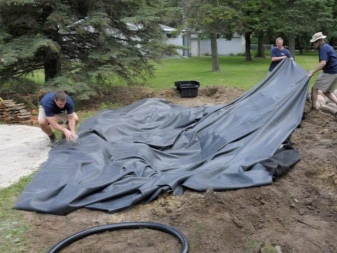

With regard to performance, the most important criterion affecting the selection of film thickness is the conditions in which the reservoir will be used. Here you need to consider the following factors:
- the more uneven and bumpy the bottom is, the thicker the film base should be;
- at a depth of an artificial reservoir of less than 1 m, a film with a thickness of 0.5 mm will be enough;
- for reservoirs with a depth of 1-2 m, it is better to take the material with a layer of 1 mm;
- for artificial reservoirs with a depth of more than 2 meters, preference should be given to butyl rubber film.
The choice of the base material can also be influenced by the complexity of the shape of the garden pond, the presence of height jumps, the presence of waterfalls and fountains. In addition, you need to consider in advance whether the pond will be used for breeding live fish or swimming.
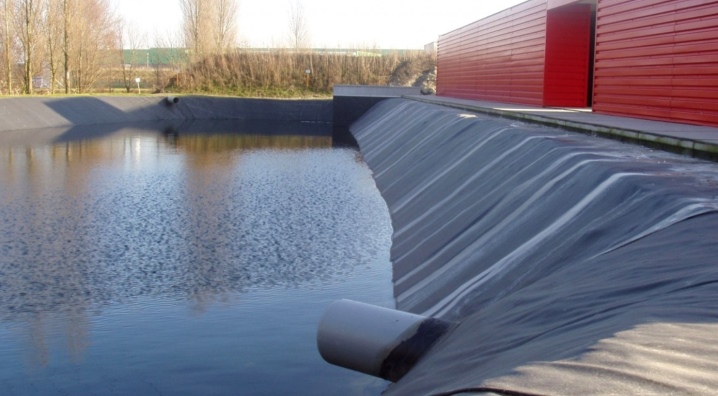
DIY natural pond without film
Alternative options for sealing the reservoir are possible without film:
- Bentonite mats are a type of building material based on granular clay, located between two layers of synthetic fabric. In contact with the liquid, the clay layer turns into a gel-like substance. Bentonite braids fix the joint elements. Installation work does not take much time. Such material is able to withstand several dehydration turns.
- Polyurea spraying technology. The material hardens within a few minutes, and when used, it can cope with heavy loads. Waterproofing work is carried out by a qualified technician.
- Spraying liquid rubber is one of the most expensive and modern options. The service life of such material is unlimited. The canvas stretches 450 percent. Environmentally friendly product, resistant to corrosive changes, temperature changes. During installation, it is necessary to be able to use modern equipment, as well as to have technological knowledge.
- Plastic containers with a volume of up to 50 cubic meters are an expensive material that is difficult to install. However, it is not a specialist who can install such a pond on the site. Service life is not limited, does not provide for individual care.
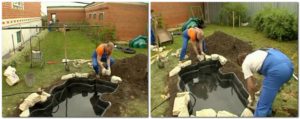 Plastic pond
Plastic pond
For summer residents, there are no restrictions on the arrangement of the site. To make ideas come true, there are various hermetic materials with exceptional technical parameters. It remains to choose the most suitable option and decorate the site with a reservoir.
Purpose of the film for a garden pond
The main purpose of the film for a reservoir is waterproofing. It keeps water in the pit, preventing it from penetrating into the ground. This is a kind of membrane baffle that keeps the liquid within the required boundaries.
You can use other options for the device of an artificial reservoir, for example, a concrete base. But this kind of work will be more time consuming. In addition, you need to think in advance about how to clean it. That is why many owners stop at the use of the optimal technology - the construction of a pond with a film bottom.
Before choosing a film as insulation for a reservoir, you need to determine what is the benefit of its use. And it consists in the following:
- decay of the material is excluded;
- the film can be used on any soil and on different bases;
- at any time, with minimal effort, you can reorganize the reservoir;
- it is possible to choose a different pattern of coverage, which will increase the attractiveness of the artificial pond on the site.
And most importantly, all work on laying the film can be done by hand. This does not require any special skills.
The main thing is to choose the right coating according to the technical characteristics.
 Photo: sotka.guru With the help of the film, you can create any shape of the pond, including the most complex
Photo: sotka.guru With the help of the film, you can create any shape of the pond, including the most complex
Best PVC Films for Pond
Such products are most often chosen if you want to save money, since this is an inexpensive option. Unlike analog materials from our TOP, its service life is about 15 years. The main material for the manufacture of the membrane is polyvinyl chloride. Here are two of the top choices in this category by buyers, selected for their versatility and ease of use.
AlfaFol Oase
AlfaFol Oase PVC film is relevant for creating a pond or pool, both small and large, due to the maximum roll width of 10 m and a length of 20 m, although smaller parameters can be selected if necessary. It is easy to install and, if necessary, can be glued with special glue without any problems.
The manufacturer offers material of various thicknesses - 0.5, 0.8 and 1 mm, depending on the size and depth of the reservoir. It is made of pure PVC, without the addition of cadmium and other similar components, which increases the service life of the product.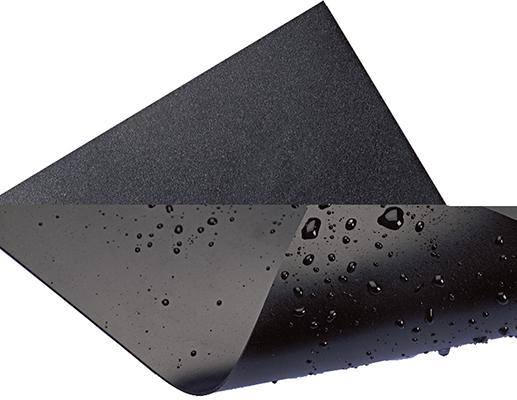
Dignity
- Good UV resistance;
- Does not deteriorate from exposure to rainwater;
- Available in two colors - olive and black;
- Does not decompose;
- Frost-resistant - withstands temperatures up to -40 degrees;
- Does not harm the plants in the pond.
disadvantages
Not found.
Ergis PVC 1.0 mm
... Users prefer to buy this PVC pond liner largely because of the service life of about 40 years, and it does not decrease with the use of such waterproofing even in harsh conditions ...
Expert opinion
First of all, this film is intended for large reservoirs up to 4 m deep; in such operating conditions, its thickness of 1 mm is considered optimal. It withstands exposure to sunlight and low temperatures with dignity, is easy to care for, as it can be cleaned with household chemicals, and is quite elastic. Thanks to the latter, it is possible to install the product in a foundation pit of almost any, even non-standard shape. The risk of damage to the canvas is practically excluded here due to its high strength and density, but if this still happens, then it will not be difficult to repair it yourself using a special glue for PVC.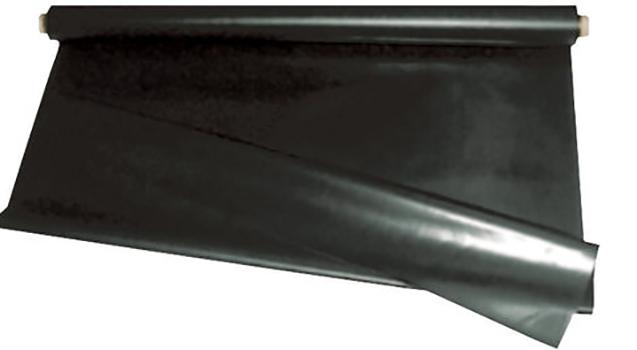
Dignity
- Environmentally friendly and safe;
- Immune to the effects of microorganisms;
- Reliable connection of seams;
- Can be used in winter;
- Long-term preservation of aesthetic appearance.
disadvantages
There is a slight smell at first.
How to build a decorative film pond with your own hands
Everyone can build a pond with their own hands, there is nothing complicated about it. The main thing is to correctly calculate the parameters of the film and perform all stages of work carefully. If you plan to build a large reservoir, you will need to connect two or more parts of the coating. This can be done in one of the following ways:
- double-sided adhesive tape;
- assembly adhesive based on neoprene;
- adhesive composition for PVC, intended for reservoirs;
- adhesive sealant for PVC film;
- an ordinary iron or a film welding machine.
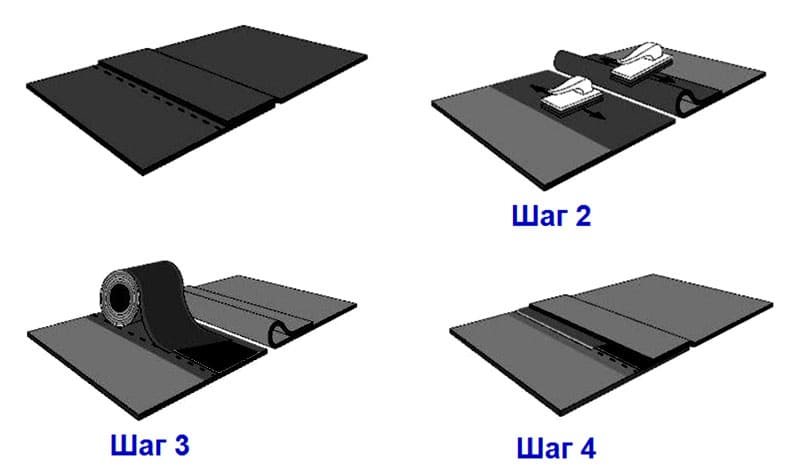 Film bonding technology
Film bonding technology
Tools and materials
To build a pond, you need to prepare:
- film, dimensions can be calculated using the formula;
- sand;
- gravel;
- wood cuts for decoration;
- plants in pots;
- shovel and chainsaw.
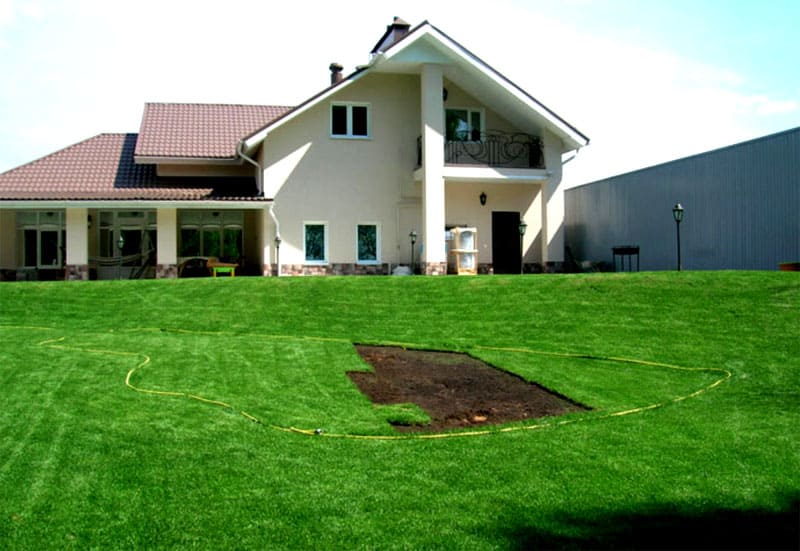 Marking can be done with a regular hose
Marking can be done with a regular hose
DIY step-by-step instructions for making a pond
Let's consider all the stages of construction and decoration of the banks of a small pond in more detail.
| Illustration | Description of action |
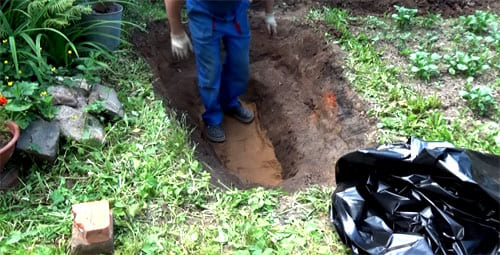 |
Dig a two-level reservoir. The contour can be pre-marked with a watering hose. You need to start work from the top line. The bottom is formed last.
Tamp the banks with a shovel, fill the bottom with a sand pillow 5-10 cm thick. Lay 2 layers of foil. In order not to tear it, it is better to take off your shoes. The cover should lie loosely, without tension. When filled with water, it will take the desired shape. |
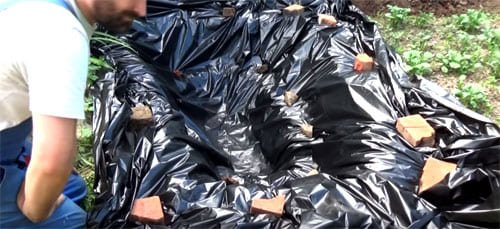 |
Press the film against the banks with stones. Fill the pond with water and leave for a day to check the tightness. |
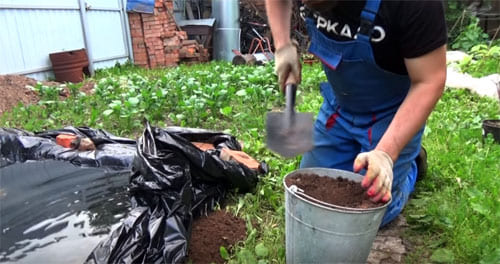 |
To create higher banks, sprinkle a small shaft with sand. |
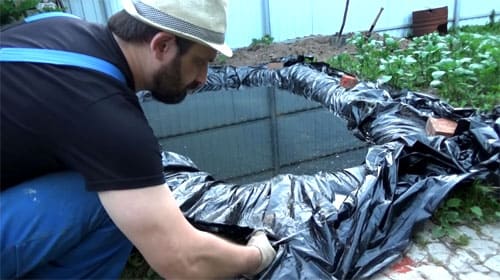 |
Tamp the sand with your hands and cover the shaft with foil. Cut off excess film edges. |
 |
Dig a small groove near the banks, fill it with a film and cover it with earth. Cut the tree into small sections up to 10 cm thick. |
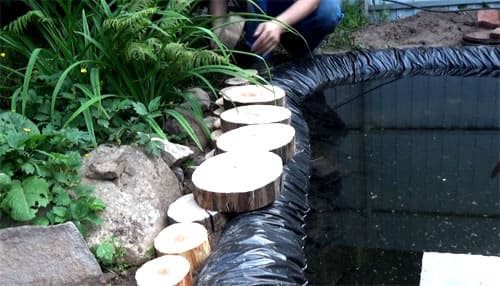 |
Decorate the coastline with cuts. Rinse the gravel and pour it onto the bottom of the reservoir. |
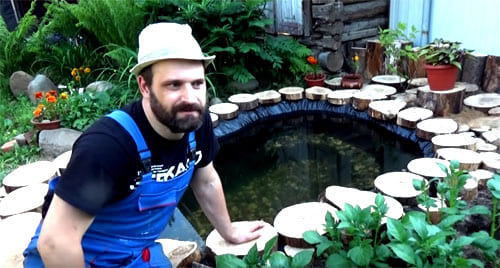 |
Decorate the shores with plants. The pond is ready. |
To create such a decorative pond, only 250 rubles and 2 days of work were spent. Additionally, it was possible to lay a layer of geotextile between the sand and the film so that the vegetation would not tear the cover. Accordingly, the cost of work will increase slightly.
In more detail, you can watch all the stages in the video:
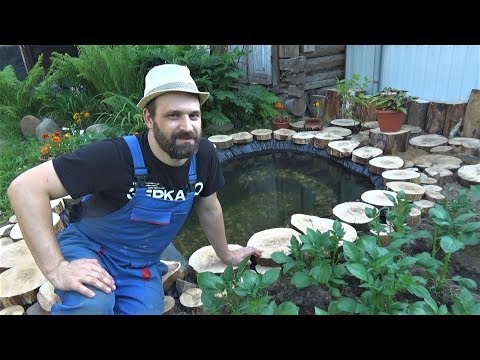
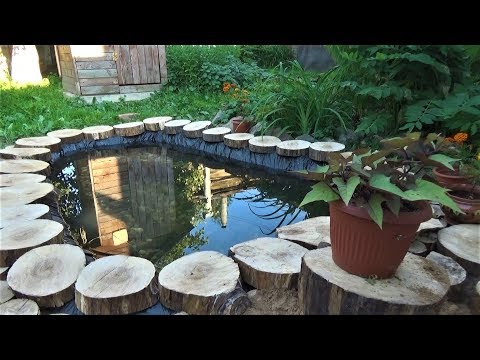
Conclusion
Each pond waterproofing material has its own pros and cons. You should choose it based on your own capabilities and expectations. It all depends on what kind of reservoir you decided to build on your site. As you can see, you can make a completely budget option that will last 3-5 years, or get down to business thoroughly and make a pond with fish and a pool.
Do not forget to "like" and subscribe to our magazine so as not to miss the most interesting reviews.
In conclusion, we suggest looking at the procedure for laying the film in a large multi-tiered reservoir:
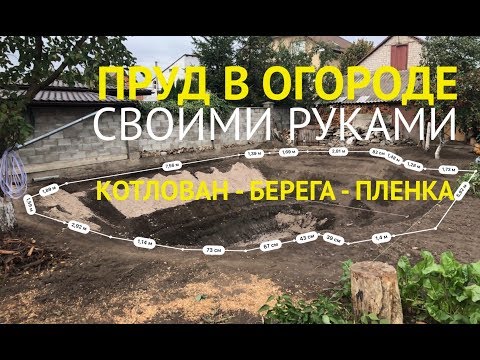
Previous Household Appliances Cure Stress, Runny Noses, Snoring: The Benefits And Harms Of The Salt Lamp
The next Household appliances

